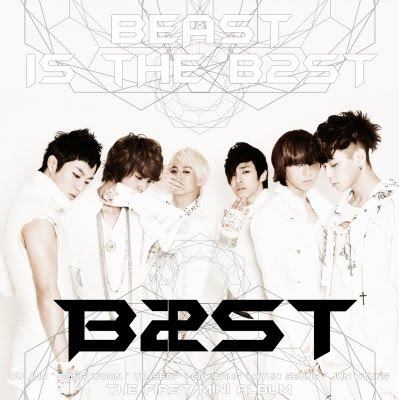________________DATA TYPES________________
In programming languages is a set of values and the operations on those values.Classification of a particular type of information. It is easy for humans to distinguish between different types of data. We can usually tell at a glance whether a number is a percentage, a time, or an amount of money. We do this through special symbols -- %, :, and $ -- that indicate the data's type. Similarly, a computer uses special internal codes to keep track of the different types of data it processes.
Most programming languages require the programmer to declare the data type of every data object, and most database systems require the user to specify the type of each data field. The available data types vary from one programming language to another, and from one database application to another, but the following usually exist in one form or another:
• integer : In more common parlance, whole number; a number that has no fractional part.
• floating-point : A number with a decimal point. For example, 3 is an integer, but 3.5 is a floating-point number.
• character (text ): Readable text
____Database Management System____
A collection of programs that enables you to store, modify, and extract information from a database. There are many different types of DBMSs, ranging from small systems that run on personal computers to huge systems that run on mainframes. The following are examples of database applications:
-computerized library systems
-automated teller machines
-flight reservation systems
-computerized parts inventory systems
Requests for information from a database are made in the form of a query, which is a stylized question. For example, the query
SELECT ALL WHERE NAME = "MAE" AND AGE > 35
requests all records in which the NAME field is MAE and the AGE field is greater than 35. The set of rules for constructing queries is known as a query language. Different DBMSs support different query languages, although there is a semi-standardized query language called SQL (structured query language). Sophisticated languages for managing database systems are called fourth-generation languages, or 4GLs for short.
The information from a database can be presented in a variety of formats. Most DBMSs include a report writer program that enables you to output data in the form of a report. Many DBMSs also include a graphics component that enables you to output information in the form of graphs and charts.
____________DBMS SOFTWARES_______________
1.Ingres is a commercially supported, open-source SQL relational database management system intended to support large commercial and government applications. Ingres is fully open source with a growing global community of contributors, but Ingres Corporation controls the development of Ingres and makes certified binaries available for download, as well as providing worldwide support.
Ingres was first created as a research project at the University of California, Berkeley, starting in the early 1970s and ending in the early 1980s. The original code, like that from other projects at Berkeley, was available at minimal cost under a version of the BSD license. Since the mid-1980s, Ingres has spawned a number of commercial database applications, including Sybase, Microsoft SQL Server, NonStop SQL and a number of others. Postgres (Post Ingres), a project which started in the mid-1980s, later evolved into PostgreSQL.
Ingres is ACID and is fully transactional (including all DDL statements).
2.Visual FoxPro is a data-centric object-oriented and procedural programming language produced by Microsoft. It is derived from FoxPro (originally known as FoxBASE) which was developed by Fox Software beginning in 1984. Fox Technologies merged with Microsoft in 1992, after which the software acquired further features and the prefix "Visual". The last version of FoxPro (2.6) worked under Mac OS, DOS, Windows, and Unix: Visual FoxPro 3.0, the first "Visual" version, dropped the platform support to only Mac and Windows, and later versions were Windows-only. The current version of Visual FoxPro is COM-based and Microsoft has stated that they do not intend to create a Microsoft .NET version.
FoxPro originated as a member of the class of languages commonly referred to as "xBase" languages, which have syntax based on the dBase programming language. Other members of the xBase language family include Clipper and Recital.
Visual FoxPro, commonly abbreviated as VFP, is tightly integrated with its own relational database engine, which extends FoxPro's xBase capabilities to support SQL query and data manipulation. Unlike most database management systems, Visual FoxPro is a full-featured, dynamic programming language that does not require the use of an additional general-purpose programming environment. It can be used to write not just traditional "fat client" applications, but also middleware and web applications.
3.OpenEdge Advanced Business Language, is a business application development language created and maintained by Progress Software Corporation (PSC). The language, typically classified as a fourth-generation programming language, uses an English like syntax to simplify software development.[1] The name was changed in 2006 to OpenEdge Advanced Business Language (OpenEdge ABL), by PSC, from PROGRESS, a.k.a. Progress 4GL, in order to overcome a presumed industry perception that 4GL's were less capable than other languages.[ The language was called PROGRESS or Progress 4GL prior to the release of version 10.0. A subset of the language, called SpeedScript, is used in the development of web applications.
OpenEdge ABL helps developers to develop applications optionally using its own integrated relational database and programming tool. These applications are portable across computing systems and allow access to various popular data sources without having to learn the underlying data access methods. This means that the end-user of these products can be unaware of the underlying architecture.
By combining a fourth generation language and relational database, OpenEdge ABL allows the use of the Rapid Application Development (RAD) model for developing software. A programmer and even end users can do rapid prototyping using the integrated and GUI tools of the development environment.
Friday, July 3, 2009
Subscribe to:
Posts (Atom)





.jpg)

